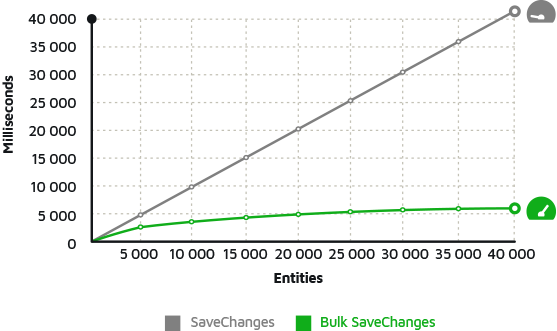Entity Framework Code First Discover How to Use this Approach
What is Entity Framework Code First?
When you start learning Entity Framework, you will often see the term Entity Framework Code First. Code first is one of the three approaches to create an entity model.
Answer
In Entity Framework, code first was introduced in Entity Framework 4.1. Code First modeling workflow targets a database that doesn't exist, and Code First will create it.
Code-First APIs will create the database on the fly based on your entity classes and configuration. It can also update the database if the model changes, using a feature called Code First Migrations.
- Code First is a very popular approach and has full control over the code rather than database activity.
- In this approach, we can do all the database operations from the code and manual changes to the database will be lost and everything depends on the code.
- In this approach, you need to create POCO entities as the data model.
Initial Model & Database Using Code First Approach
Create a new application and install the EntityFramework NuGet package.

Once the package is installed, add the following classes.
public class Book { public int BookId { get; set; } public string Title { get; set; } } public class BookContext : DbContext { public BookContext() : base("BookContext") { } public DbSet<Book> Books { get; set; } }
It defines a single Book class that makes up our domain model and a BookContext class that is our EF Code First context.
You can also specify the connection string in App.config file.
<connectionStrings> <add name="BookContext" connectionString="Data Source=(localdb)\ProjectsV13;Initial Catalog=BookContext;" providerName="System.Data.SqlClient"/> </connectionStrings>
Now that we have a model let's use it to perform data access.
using System; using System.Data.Entity; namespace EFDemo { class Program { static void Main(string[] args) { using (var db = new BookContext()) { db.Books.Add(new Book { Title = "Introduction to Programming" }); db.SaveChanges(); foreach (var book in db.Books) { Console.WriteLine(book.Title); } } } } public class Book { public int BookId { get; set; } public string Title { get; set; } } public class BookContext : DbContext { public DbSet<Book> Books { get; set; } } }
Let's run your application, and you will see that the database is created automatically.

Related links
For further details please see the following links.
- https://www.tutorialspoint.com/entity_framework/entity_framework_code_first_approach.htm
- https://www.entityframeworktutorial.net/code-first/what-is-code-first.aspx
ZZZ Projects
